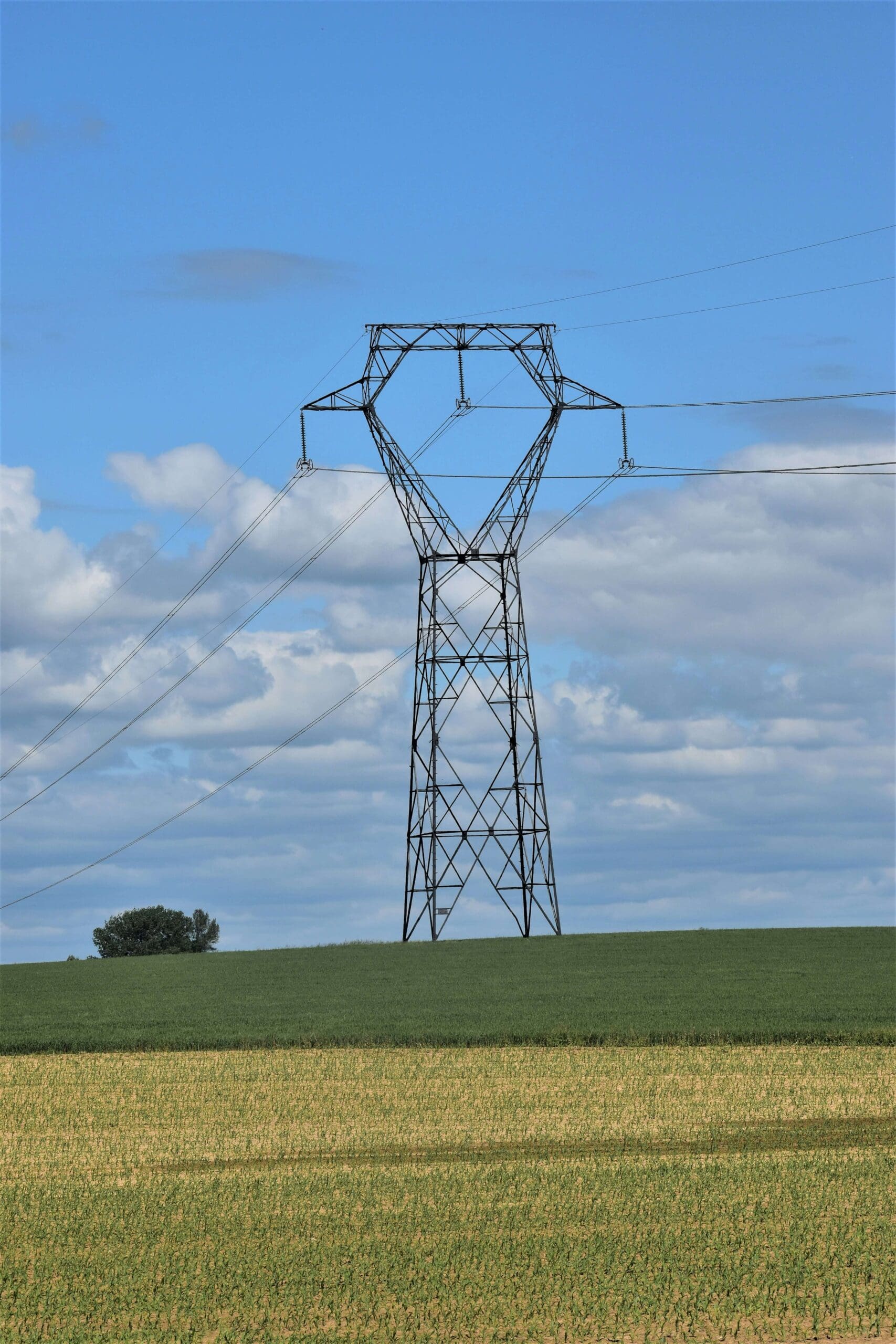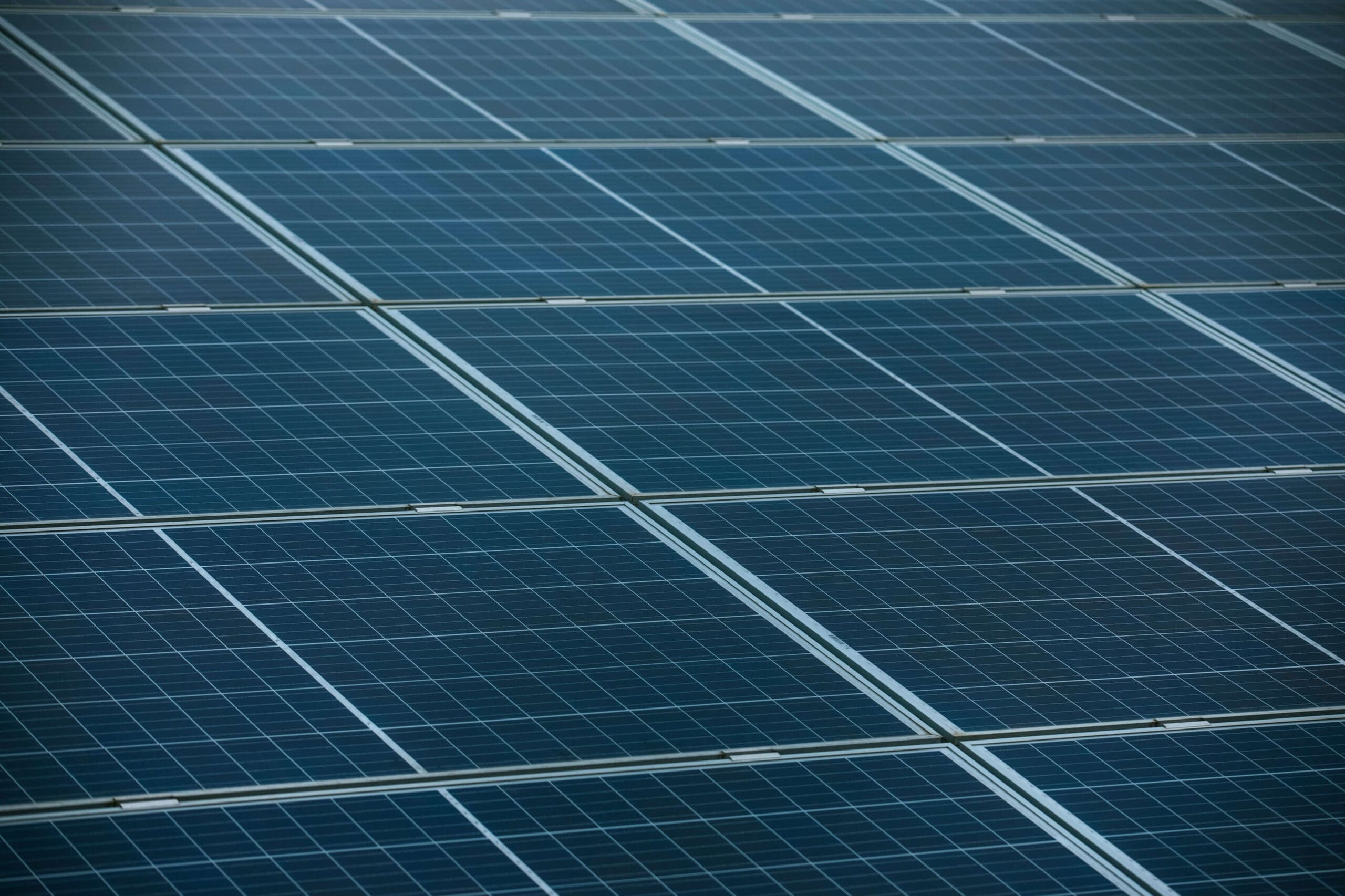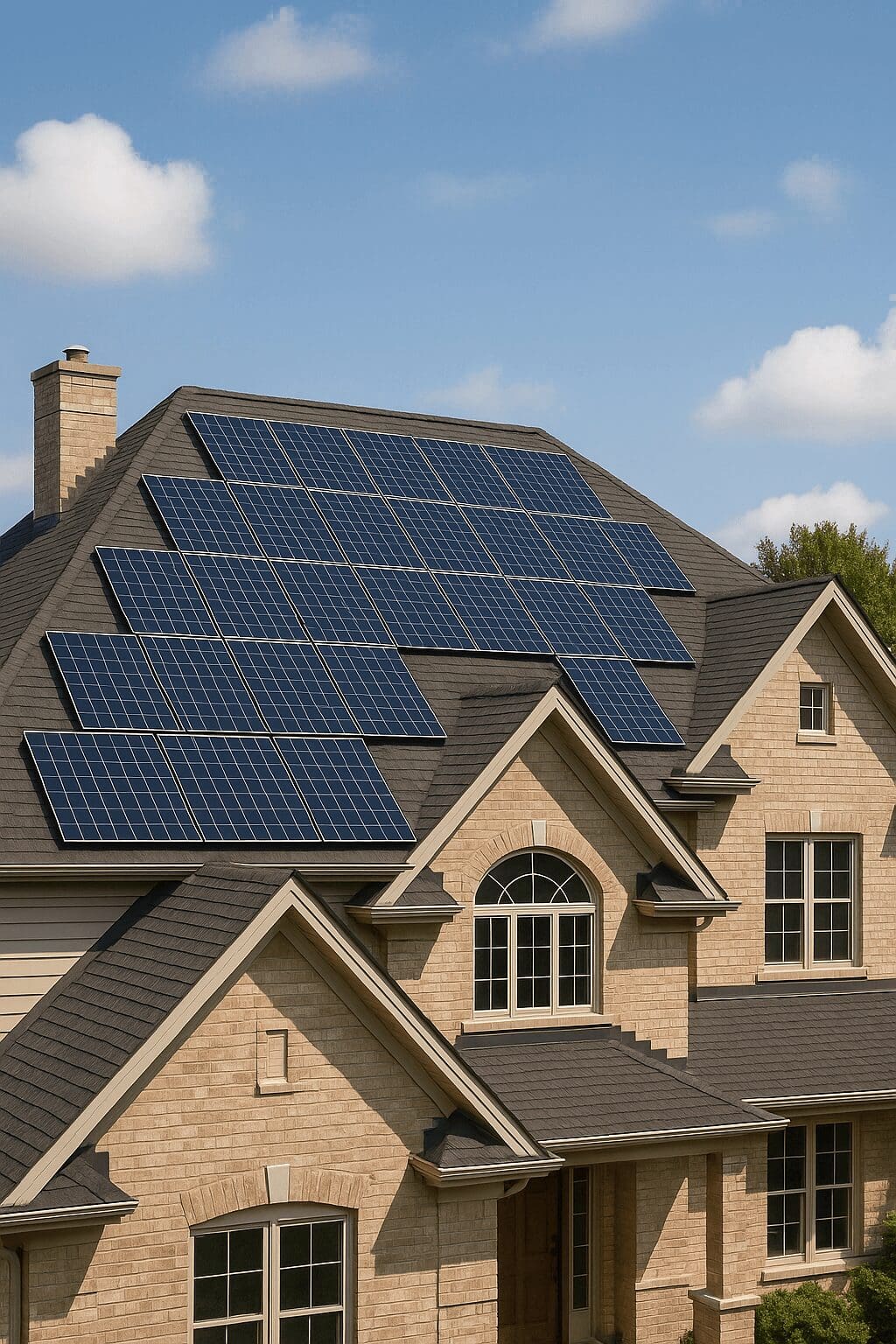Energy independence means having control over your household’s electricity supply and gaining freedom from unpredictable utility prices and grid disruptions. It’s about reliability, stability, and peace of mind—knowing that no matter what happens, your home has the power it needs. Instead of relying on traditional energy providers, homeowners can generate and store their own electricity, reducing dependence and making costs more predictable.
Solar power makes this independence possible. By capturing sunlight and converting it into electricity, solar panels allow families to produce energy right at home. Pairing solar with battery storage takes it further, ensuring extra power is saved for nighttime use or emergencies. Whether avoiding volatile electricity rates or staying powered through extreme weather, solar helps homeowners take charge of their energy future.More than just a way to cut utility bills, solar redefines energy use, giving families long-term stability, control, and resilience. With the right system in place, solar isn’t just an upgrade, it’s a shift toward true energy independence, where homeowners decide how and when they use their power.
The Rising Demand for Energy Independence
More families are looking for ways to take control of their energy future, and solar power is leading the way. Rising electricity costs, unpredictable grid outages, and increasing energy demands make traditional energy sources less reliable. By generating power at home, solar offers stability, lower costs, and protection from external disruptions. As the demand for energy independence grows, homeowners are turning to solar solutions that provide both financial and practical benefits, giving them the freedom to power their lives on their own terms.
Challenges of Traditional Energy Sources
Rising electricity costs strain household budgets, with utility rates fluctuating unpredictably. Power grid failures—whether due to extreme weather, infrastructure issues, or demand spikes—leave homes vulnerable to outages. Meanwhile, reliance on fossil fuels means energy prices are dictated by external factors, creating long-term uncertainty.
Why Families Are Turning to Solar
Solar energy offers a solution. By generating power at home, families can reduce dependence on utilities, stabilize electricity costs, and gain control over their energy future. Many homeowners are choosing solar plus battery storage, ensuring power remains available even during outages. Solar also provides long-term financial benefits, lowering monthly bills and offering return on investment through tax incentives and rebates. Reliability is another key factor! Unlike the grid, which can fail unexpectedly, solar systems generate consistent, predictable energy tailored to household needs.
How Solar Panels Empower Families
Solar energy puts families in control of their electricity needs, offering a reliable, cost-effective way to power homes while reducing reliance on utility companies. Instead of depending on fluctuating energy prices and unpredictable grid service, solar panels allow homeowners to generate their own power, ensuring stability and long-term financial savings. By capturing sunlight and converting it into electricity, rooftop solar transforms homes into self-sustaining energy sources.
Generating Power at Home
Rooftop solar panels absorb sunlight and convert it into electricity, providing homes with their own renewable power source. This means families are no longer fully dependent on utility providers and the volatile prices that come with traditional energy. Solar systems are designed to work in various weather conditions and can be paired with battery storage to ensure power is available even at night or during outages. By producing energy at home, families gain greater stability, making unexpected rate hikes and service disruptions a thing of the past.
Reducing Monthly Energy Costs
Installing solar panels offers long-term financial savings by lowering monthly electricity bills and protecting homeowners from rising energy costs. While there’s an initial investment, solar panels often pay for themselves over time through lower utility expenses and available tax incentives. Many families see a significant reduction in their energy bills, with some even eliminating them entirely by generating enough power to cover their needs.
Off-Grid vs. Grid-Tied Solar Solutions
Choosing the right solar setup depends on your energy goals. Some families aim for full energy independence by disconnecting from the utility grid entirely, while others prefer the flexibility of remaining grid-connected but reducing their reliance on traditional power sources. Both approaches offer significant benefits, but understanding the differences can help homeowners make the best decision for their needs.
Benefits of Going Off-Grid
An off-grid solar system allows families to generate and store their own electricity, eliminating dependence on utility providers. Paired with solar battery storage, excess power generated during the day is stored for nighttime use, ensuring continuous energy availability. Off-grid systems are ideal for homeowners in remote locations or those seeking complete autonomy from fluctuating electricity rates and grid outages. While upfront costs for batteries and larger solar arrays can be higher, the long-term benefit of never paying another power bill makes off-grid living a compelling choice.
Grid-Tied Systems with Backup Power
For homeowners who want to lower electricity costs without fully disconnecting, grid-tied solar offers a practical middle ground. These systems allow families to generate their own solar power while remaining connected to the utility grid for backup when needed. Adding battery storage enhances this setup by providing energy during grid failures, offering security against outages. Grid-tied systems also allow homeowners to take advantage of net metering, where excess solar energy is sent back to the grid in exchange for credits, further lowering utility bills.
Solar Battery Storage: Key to Independence
Solar panels generate power during the day, but what happens when the sun goes down? Battery storage bridges the gap, ensuring homes have access to solar energy even at night or during emergencies. For families seeking energy independence, batteries provide a reliable way to store excess power, reducing dependence on the grid and offering peace of mind during outages. By capturing and saving solar-generated electricity, homeowners can maximize their system’s efficiency and keep their homes powered—no matter the time of day.
How Batteries Extend Solar Energy
Battery storage allows families to store surplus solar energy for use when sunlight isn’t available. During peak daylight hours, solar panels often produce more electricity than a home consumes. Instead of sending that extra energy back to the grid, batteries store it for nighttime use, cloudy days, or unexpected power outages. This means homes remain powered even when grid electricity is unavailable, ensuring consistent energy supply and greater independence from utility companies.
Choosing the Right Battery System
When selecting a solar battery, homeowners typically choose between lithium-ion and lead-acid options. Here’s some key information about both battery types:
- Lithium-ion batteries are the most popular choice due to their longer lifespan, higher efficiency, and faster charging times. They store more energy in a compact size and require minimal maintenance.
- Lead-acid batteries, while more affordable upfront, have a shorter lifespan, lower efficiency, and require regular upkeep.
For families prioritizing long-term reliability, lithium-ion technology is often the best investment for a stable energy future.With the right battery system, solar energy becomes a dependable, round-the-clock solution for households striving for energy independence.
Energy Security & Resilience
Solar energy doesn’t just provide savings, it offers reliable power when families need it most. Traditional electricity grids are prone to blackouts, whether from extreme weather, infrastructure failures, or unexpected demand spikes.
Solar-powered homes stay operational, ensuring essential appliances, lighting, and heating continue to function even when the grid goes down. Battery storage enhances this reliability by storing excess power for nighttime use and emergencies, giving homeowners peace of mind during uncertain situations.
Power During Outages
When the grid fails, solar-equipped homes with battery backup remain powered, reducing dependence on external utilities. Stored solar energy ensures families can maintain normal routines, avoiding disruptions to everyday life. Whether it’s keeping food fresh, powering medical equipment, or maintaining communication, solar keeps households running smoothly when others experience outages.
Weather & Disaster Preparedness
Storms, heatwaves, and other extreme weather events frequently cause power disruptions. Solar systems provide energy security, allowing homes to generate electricity regardless of grid conditions. Battery storage ensures continued access to power during prolonged outages, offering reliability when families need it most. With solar, homeowners can weather uncertainties with confidence, staying safe and comfortable even in challenging conditions.
Social & Economic Benefits for Society
Solar energy doesn’t just provide independence, it also creates lasting benefits for families and communities. By choosing to generate electricity at home, homeowners reduce their reliance on traditional power sources while contributing to a more resilient and potentially profitable local energy system. Whether it’s lowering carbon footprints or strengthening neighborhoods through shared solar initiatives, the impact of solar reaches far beyond individual households.
How Solar Energy Can Boost Profits for Oil and Gas Economies
For economies that rely heavily on oil and gas production, the transition to solar power might seem counterintuitive at first. However, integrating solar energy into domestic infrastructure can enhance the profitability of fossil fuel resources. Here’s how:
In Alberta, a significant portion of oil and natural gas production is consumed domestically, particularly for electricity generation and industrial processes. According to the Alberta Energy Regulator, in 2023, the industrial sector’s demand for natural gas was approximately 4.2 billion cubic feet per day, with a large portion used in the oil sands for processes like steam generation and bitumen upgrading.
By investing in solar energy for electricity generation, Alberta can reduce its domestic consumption of natural gas. This shift would free up more natural gas for export, where it can fetch higher prices compared to subsidized domestic rates. Moreover, reducing domestic consumption can alleviate the pressure on Alberta’s natural gas infrastructure, potentially delaying or minimizing the need for costly expansions that eat away at profits.
Furthermore, transitioning to solar energy can help Alberta diversify its energy mix. This diversification not only enhances energy security but also positions Alberta as a forward-thinking energy producer in the global market.
In this way, solar isn’t a threat to oil and gas economies, it’s a strategic asset. By aligning renewable energy deployment with export goals, Alberta can reduce domestic fuel consumption, increase export revenues, and solidify its role in global energy leadership.
Community Impact
The benefits of solar extend beyond individual households. As more families embrace solar, neighborhoods collectively reduce demand on the power grid, making energy more stable and predictable for everyone.
Communities with widespread solar adoption often experience fewer blackouts and lower overall electricity costs, as localized energy production reduces strain on utilities.
Additionally, solar helps create opportunities, whether through increased property value, new jobs in installation and maintenance, or shared solar programs that make solar accessible for more households.When families invest in solar, they’re not just gaining energy independence, they’re contributing to a stronger, more resilient community.
Overcoming Barriers to Solar Adoption
Many homeowners see the value in solar energy but hesitate due to perceived obstacles like upfront costs or misinformation about how solar works.
The reality? Financial incentives and advancements in solar technology have made it more accessible than ever, and common myths are quickly fading as more families experience the benefits firsthand.
Addressing Installation Costs
While solar requires an initial investment, various financial incentives help make it affordable. Many governments and local agencies offer tax credits, rebates, and financing programs to reduce costs.
Additionally, net metering allows homeowners to earn credits for excess energy sent back to the grid, lowering monthly expenses. With solar panel prices steadily decreasing and financing options expanding, families can lock in long-term savings while gaining energy independence, often for less than they’d pay on traditional electricity bills.
Debunking Common Myths
Some homeowners worry that solar doesn’t work in colder climates or that panels require constant maintenance. Modern solar technology performs efficiently in various weather conditions, including snowy environments, and panels are designed to be low-maintenance with decades-long lifespans. Another common misconception is that solar power doesn’t provide enough electricity. However, with the right setup and battery storage, families can generate and store ample energy to meet their daily needs.
Future of Energy Independence with Solar
Solar energy is rapidly transforming how families power their homes, moving toward greater efficiency, affordability, and self-sufficiency. With new innovations making solar more accessible, homeowners have more options than ever to take control of their electricity needs. Whether through smarter energy management or enhanced battery storage, solar continues to pave the way for true energy independence.
Advancements in Solar Technology
Solar panels have become more efficient, generating greater power while requiring fewer installations. Battery storage technology has also improved, offering longer lifespans, better reliability, and increased capacity for storing excess energy. Additionally, smart monitoring systems give homeowners real-time insights into energy usage, helping them optimize consumption and reduce reliance on traditional utilities.
With costs decreasing and financing options expanding, solar is becoming an even more viable option for families looking to secure their energy future.
A Vision for Self-Sustaining Homes
The future of energy independence lies in decentralized power systems, where families generate, store, and manage their electricity without relying on the grid. Innovations like AI-driven energy management and grid-interactive systems are making homes self-sustaining, adapting power use to maximize efficiency. As solar technology continues to advance, more homeowners will experience stable, resilient energy solutions tailored to their needs, giving them full control over how they power their lives.
Wrapping it Up
Solar energy is a pathway to energy independence, allowing families to take control of their electricity needs and financial future. By generating power at home, homeowners can break free from rising utility costs, grid outages, and the unpredictability of traditional energy sources. The shift to solar brings stability, reliability, and long-term savings, making it a smart investment for families looking to secure their energy future.
Why Energy Independence Matters
For families, energy independence is about having reliable, cost-effective power without being tied to fluctuating utility rates. Solar provides consistent energy, allowing homeowners to maintain control over their expenses while ensuring power remains available during outages. With the addition of battery storage, homes can store excess electricity for nighttime use or emergencies, further strengthening reliability. Over time, solar pays for itself, reducing household expenses and providing greater financial predictability.
Encouraging the Transition
The transition to solar is easier than ever, with financing options, tax credits, and improved technology making it more accessible to homeowners. Families considering solar should explore available incentives, choose a system tailored to their energy needs, and partner with reputable providers to ensure the best setup.
After all, taking the leap toward energy independence is about securing a more stable, resilient future for generations to come.




